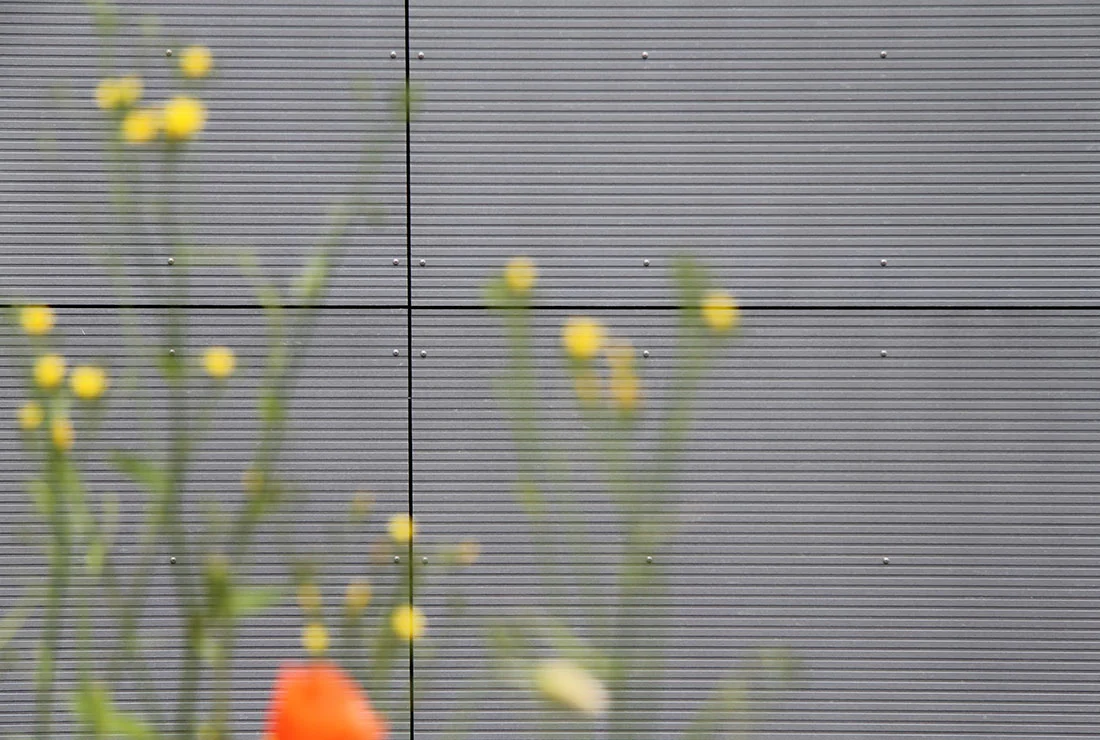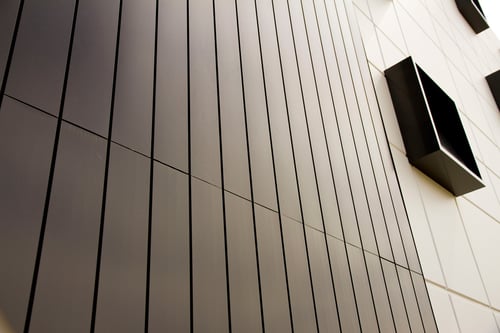A ventilated façade is a dry-installed exterior building envelope system. It can be installed on new construction sites or on buildings undergoing renovation.
Ventilated façade systems, also known as double-skin façades or rain-screens, greatly assist in protecting buildings against wind, rain and temperature variations and keeping the building dry and energy efficient.

A ventilated façade system consists of two layers of different façades separated by an air cavity which prevents rainwater from penetrating and diffuses water vapour from the inside. While the external cladding protects from rain and wind, the air cavity plays a major role in the ventilated façade system.
A naturally ventilated façade results in a temperature difference between the face of the cladding panel and the air cavity behind. This in turn creates a variation in air density causing air to flow upwards within the cavity resulting in a chimney effect. The airflow transports heat from the cavity out through openings at the top of the wall, reducing humidity and increasing the efficiency of insulation.
Ventilated Façade in Summer
The increase in temperature inside the cavity during the summer months generates a “chimney effect” that pushes the air upwards, thus reducing the wall’s temperature facing the inside of the building. In other words, it keeps the building colder.
Ventilated Façade in Winter
During the cold winter months, the opening in the ventilated facade balances the wall’s temperature facing the interior of the building, which reduces the risk of moisture from condensation.
Benefits of Ventilated Buildings
Thermal
Significant reductions in HVAC reliance through:
- A reduction in the amount of heat the building absorbs in hot weather conditions from the partial reflection of solar radiation by the outside façade, and the naturally ventilated air cavity.
- In cold weather conditions ventilated walls retain heat, resulting in a lower reliance on heating. HVAC electricity consumption typically accounts for around 40% of total building consumption.
Acoustic
Ventilated façade systems provide an increase in the reflection of external noise, with some projects achieving an average reduction of up to 8dB. With the primary external noise sources affecting buildings being road traffic noise, a reduction of this level can greatly improve occupant comfort.
Structural
Ventilated façades don’t suffer from mould, fungi and rot, making them extremely durable and virtually maintenance free. The natural bottom-to-top airflow through the cavity assists in eliminating moisture accumulation on the façades, helping to prolong the structural integrity and ultimately the lifespan of a building.
Sustainable External Wall Systems From Fairview
Fairview cladding products and external wall systems are Australian Standards AS4284 tested for high performance, energy efficiency and minimal maintenance.
The fixing system and cladding type make up the two most important elements in building an effective, sustainable external wall system. When partnering with Fairview, you also get access to our cladding specialist's expertise, which offers an unprecedented level of experience and insight into installing ventilated façade systems for Australian conditions.
The team at Fairview are ready to assist you at any stage of your new build or rectification project, with a second-to-none QA process, technical advice, compliant and safe products, and readily available stock.
LEARN MORE: https://explore.fv.com.au/genesis-fibre-cement-cladding



